The gardens at East Ruston: 'It's not simply good, it is a dose of pure joy'
Every area of this lush and exuberant garden of East Ruston Old Vicarage, near Norwich in Norfolk, is planted to give three seasons from each plot and, says Tilly Ware, a day’s visit will only scratch the surface. Photographs by Richard Bloom.
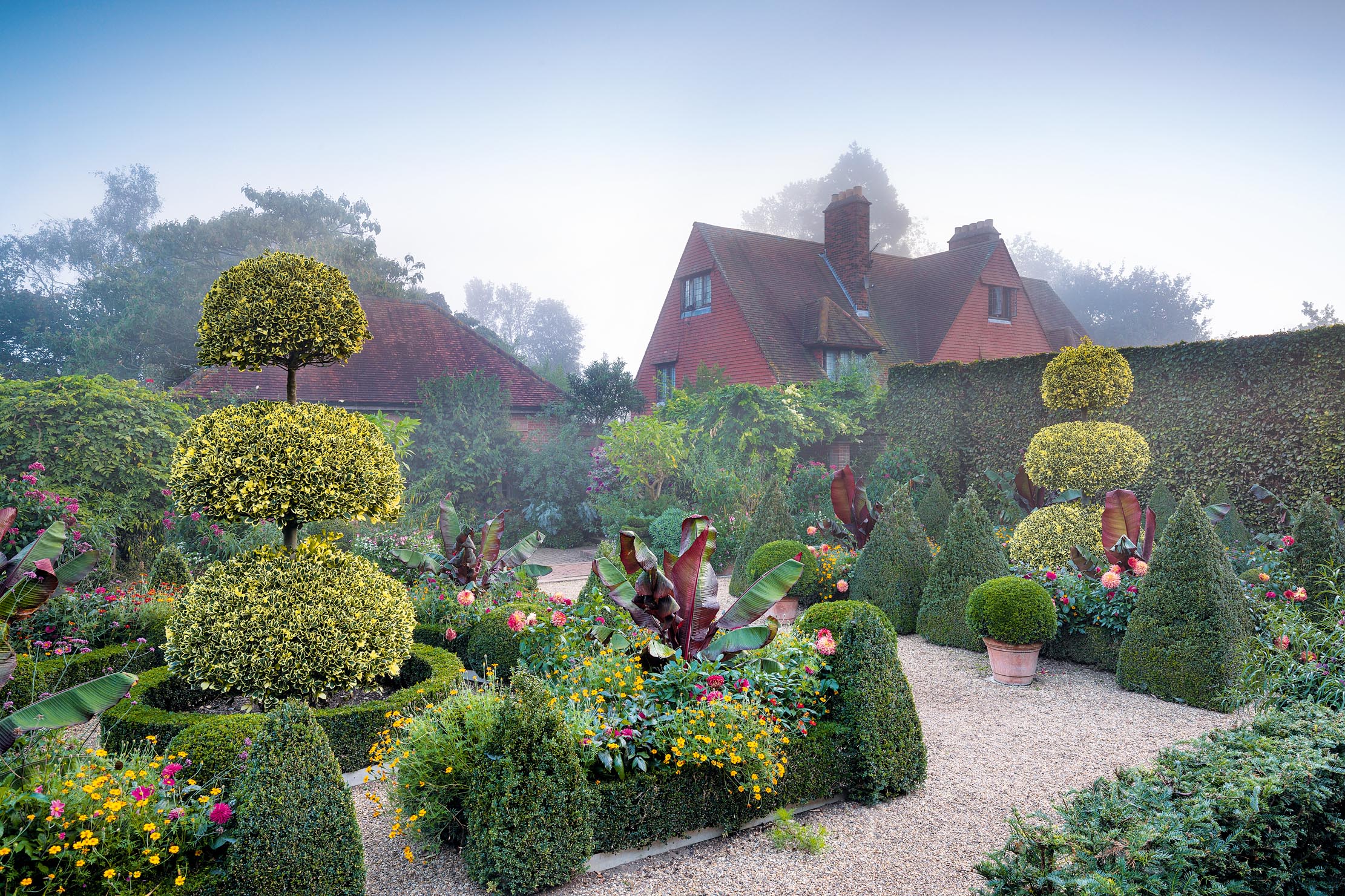
Always beware that word subtle,’ wrote Christopher Lloyd. ‘It’s so often a substitute for original thought.’ If identikit borders are bringing on an attack of the yawns, then head straight to East Ruston Old Vicarage. It is a shot in the arm against dullness.
The approach is not encouraging, with the vicarage and St Mary’s Church huddling together, marooned on acres of featureless arable land on the north Norfolk coast. A shelterbelt of holm oak and Monterey pine encircles the garden, as dark and dense as citadel walls. Yet, through the gates, an extraordinary world explodes. It’s like departing drizzly Gatwick and landing slap-bang in the middle of the Rio carnival. Lush abundance and hot exuberance reign supreme. Subtle can take a hike.
The vicarage was built in 1913 in what its owner, Alan Gray, calls ‘Home Counties vernacular’. When he and his partner, Graham Robeson, bought it in 1973, it sat in two acres of windswept grass. Half a century later, the garden covers 32 acres made up of 23 different ‘happenings’: a succession of stage sets, each with a distinctive, theatrical personality.
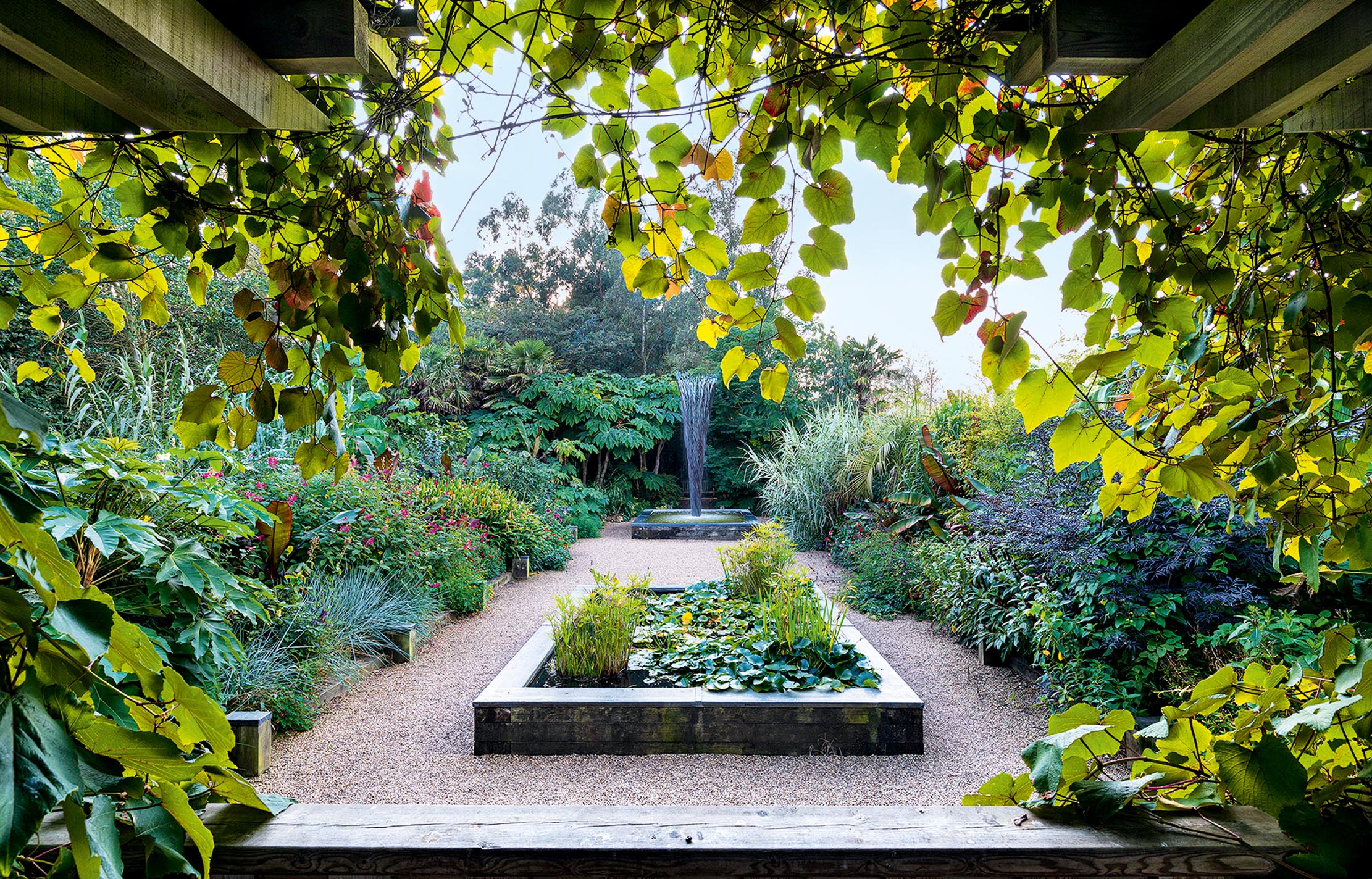
Every detail was dreamt up, drawn to scale and brought to life by the couple. They began by following a roughly Arts-and-Crafts style, to correspond with the house, but any attempt to label East Ruston is hopeless. It is the most intensely personal place imaginable, although it does have a strong flavour of Great Dixter in East Sussex — Lloyd was an early visitor and champion and The Well-Tempered Garden ‘was, and still is, a Bible’. There is a detailed guidebook and map available at the tearoom, but better first to follow your nose and slowly soak it up, then do it all over again the other way around. You’ll want a season ticket — one day will only scratch the surface.
The aim at East Ruston, explains Mr Gray, is to ‘always get three seasons from each plot’. Autumn’s act is boldly stage managed, with large-scale groupings of exotic species and strobing shades of purple, pink and red: not so much a season of mellowness as one of jewel brightness and renewed vigour.
East Ruston’s sandy, neutral soil and maritime climate allows for a mammoth range of plants, particularly South American beauties that provide size and impact. A sun-baked terrace runs along the south side of the house, divided into interlocking rooms by crisp hedging and brickwork. In the first of these, the Dutch Garden, eight raised beds become paintboxes for spectacular colour-clashing: lollipop-bright tulips in spring, lipstick-hued dahlias in summer and autumn.
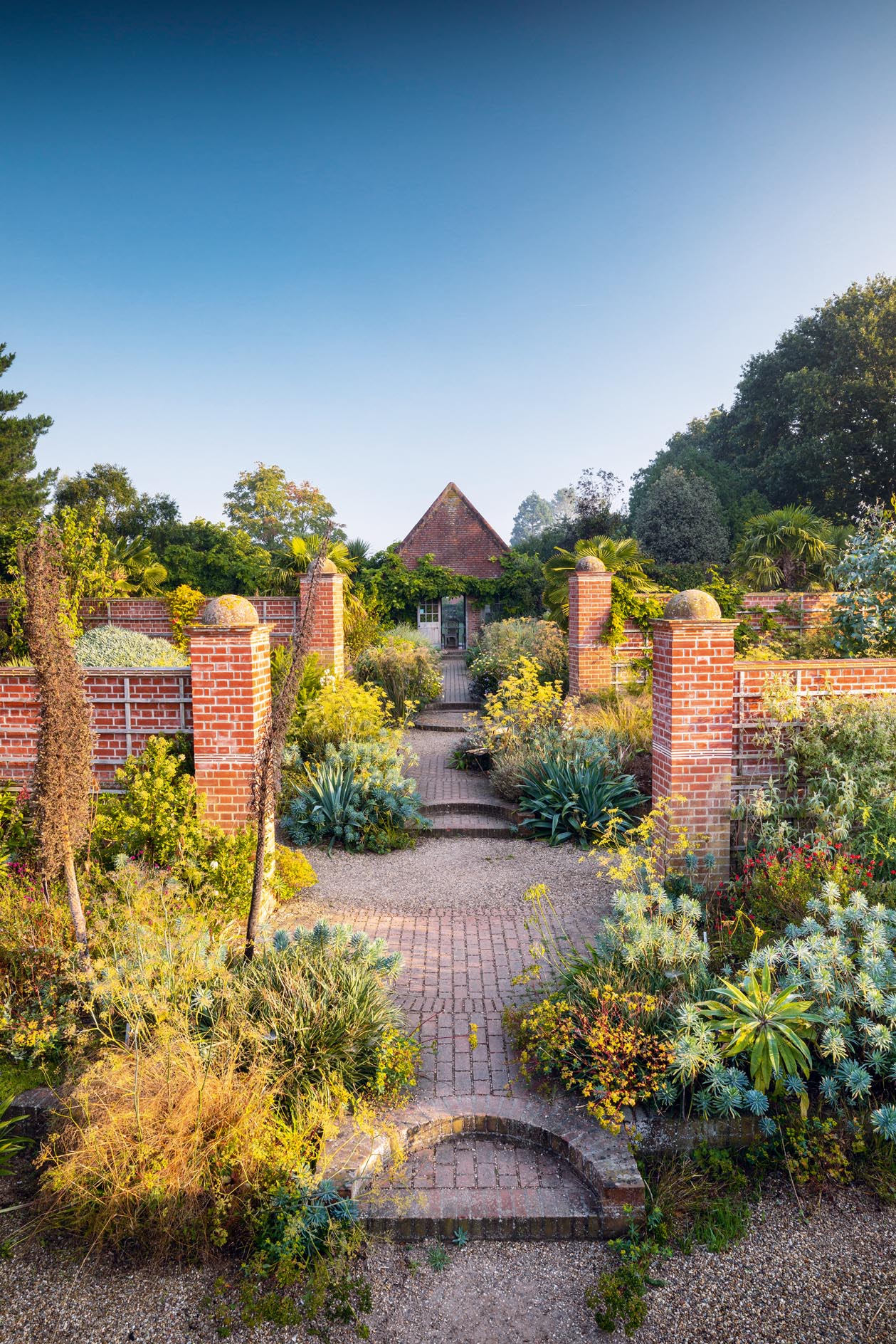
On every wall, climbers are madly showing off: Trachelospermum jasminoides pumping out scent; barley-sugar pillars of black-eyed susan twisting beside the door; a giant Paraguay nightshade (Solanum rantonnetii) dripping in blue and gold blossoms. Tucked into an old teak greenhouse, the shrieking pink of Nerine ‘Lucinda’ jostles merrily with sherbety Pelargonium ‘Apple Blossom’. A vast glory bush, Tibouchina urvilleana, is smothered with petals in Cadbury’s Dairy Milk purple.
Sign up for the Country Life Newsletter
Exquisite houses, the beauty of Nature, and how to get the most from your life, straight to your inbox.
If all this wasn’t showbiz enough, a series of gigantic, sumptuous pots are arranged along the terrace, each with a showstopping 6ft Brugmansia x candida ‘Grand Marnier’. The gnarly, twisted trunks shimmer with hand-sized apricot trumpets, as if silky French underwear had been hung out to dry on an ancient olive. A froth of Ageratum houstonianum, Nicotiana sylvestris and Argyran themum ‘Jamaica Primrose’ pours out underneath. They are in full swing by June and still looking superb in September.
The party continues in the Exotic Garden, where, by autumn, the inhabitants are at their fullest, fattest height. Gigantic banana leaves, ribbed in russet brown and backlit by slanting September sun, flutter like plumage. Vitis coignetiae, the largest-leaved vine, is beginning to bronze, as Tetrapanax papyrifer rustles above spires of ginger lily (Hedychium densiflorum). The emphasis is on foliage, but Mr Gray rarely ignores colour, so Schiaparelli-pink Salvia greggii and blue S. caerulea are underplanted with tigerish Tagetes ‘Cinnabar’.
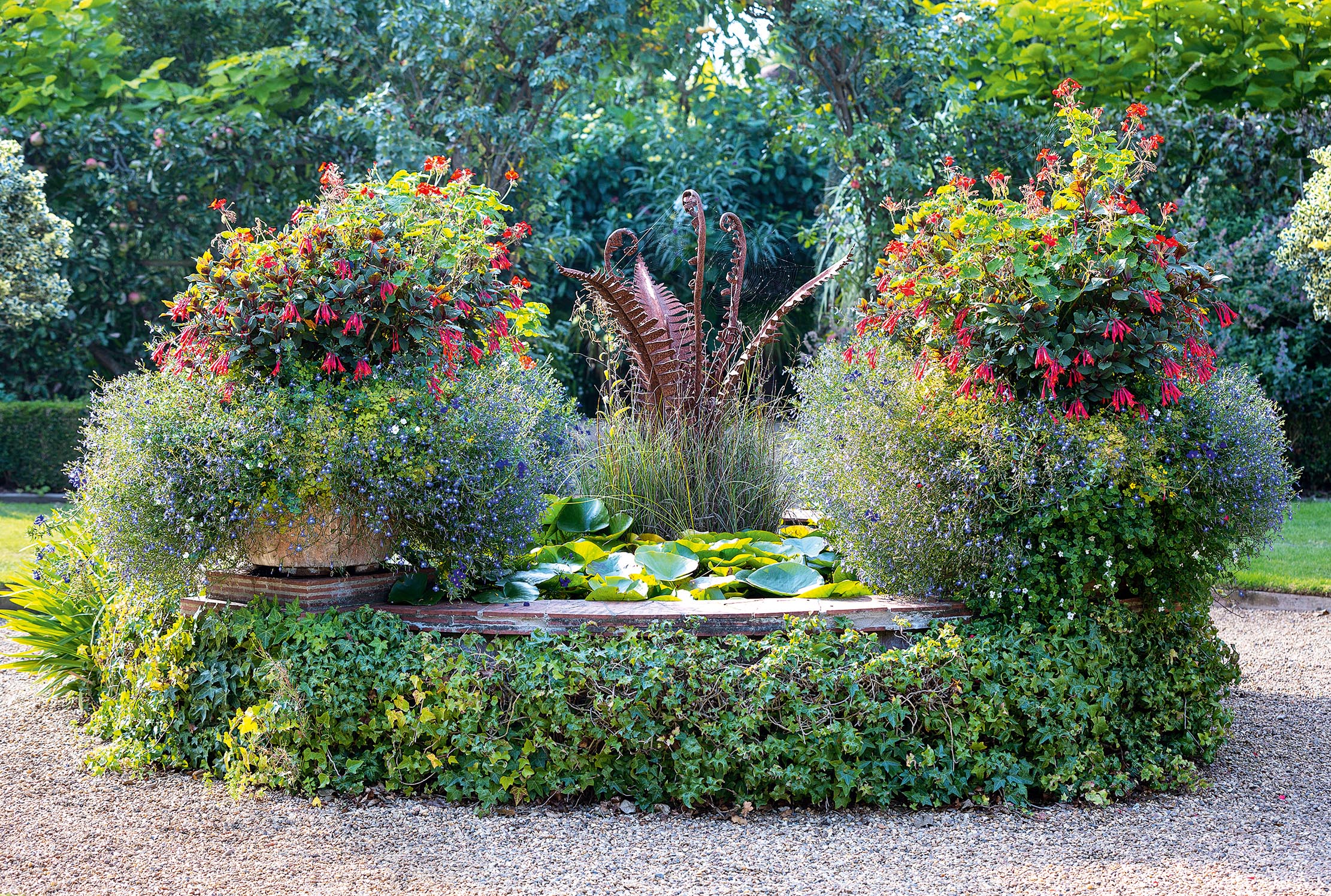
Paths snaking off into the Woodland Garden are lit by glowing hydrangeas, including crinkled H. quercifolia ‘Snowflake’ and the luscious H. macrophylla ‘Madame Emile Mouillère’. The atmosphere is low-key, give or take the odd Dicksonia tree fern, but not for long. With a magician’s sleight of hand, the scenery switches from dappled English forest to a sun-baked, dried-up riverbed in Arizona.
Named the Desert Wash, this is a spectacular feat of landscaping and one of the most thrilling achievements here. More than 400 tons of flint, layer upon layer of gravel and a vast array of boulders were used in its construction, resulting in an undulating landscape of great beauty. Agaves, cacti, aloes and puyas throw sharp shadows across drifts of Eschscholzia californica and Verbena bonariensis. The riverbed ripples with agapanthus seedheads, the dusky blue repeated in the glaucous, succulent spears of Hesperoyucca whipplei. Shaggy trunks of Yucca elata loom out of the rocks, like members of the Addams Family.
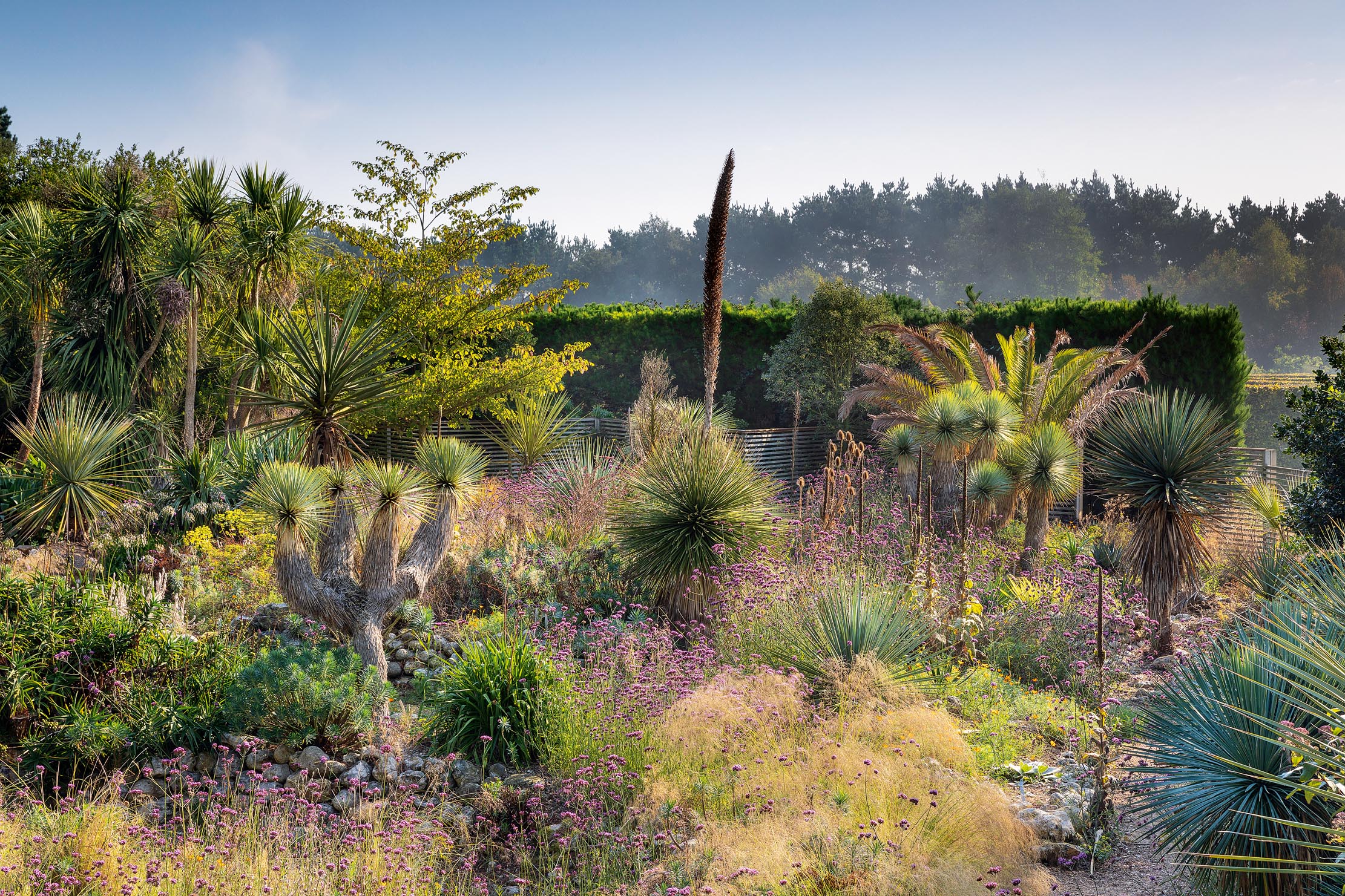
There is still the Walled Garden, Rose Walk, Clematis Walk, Glasshouse Garden and much more to go… it may be time to pause and take stock of this garden’s chutzpah. The Mediterranean garden is scattered with benches and pavilions, next to which Yucca gloriosa produces fat creamy goblets tinged with plum streaks, delicious as a marshmallow. The stars of the stage are the 6ft, salmon-pink stems of Beschorneria yuccoides and the even loftier spires of Echium pininana. Both flower earlier in the summer, but their towering forms are left to sway in the soft autumn light.
It could seem bewildering, this throng of diverse characters, if it weren’t so carefully and intuitively directed. Entrances and exits are exquisitely framed, levels subtly changed, vistas opened up. There is a constant thread of progression pulling you through the story, as if turning the pages of a lavishly illustrated, intricately constructed pop-up book. As Mr Gray says: ‘It’s all about manipulating things.’
A former antique dealer, he has a magpie’s eye for a treasure and constantly experiments, saving seed from dahlias or propagating cuttings of violet salvias. He instinctively understands the need to entertain in a garden open to the public for eight months of the year. ‘They come for fun,’ he insists, ‘so you need to make a place good to be in.’ East Ruston Old Vicarage is not simply good, it is a dose of pure joy.
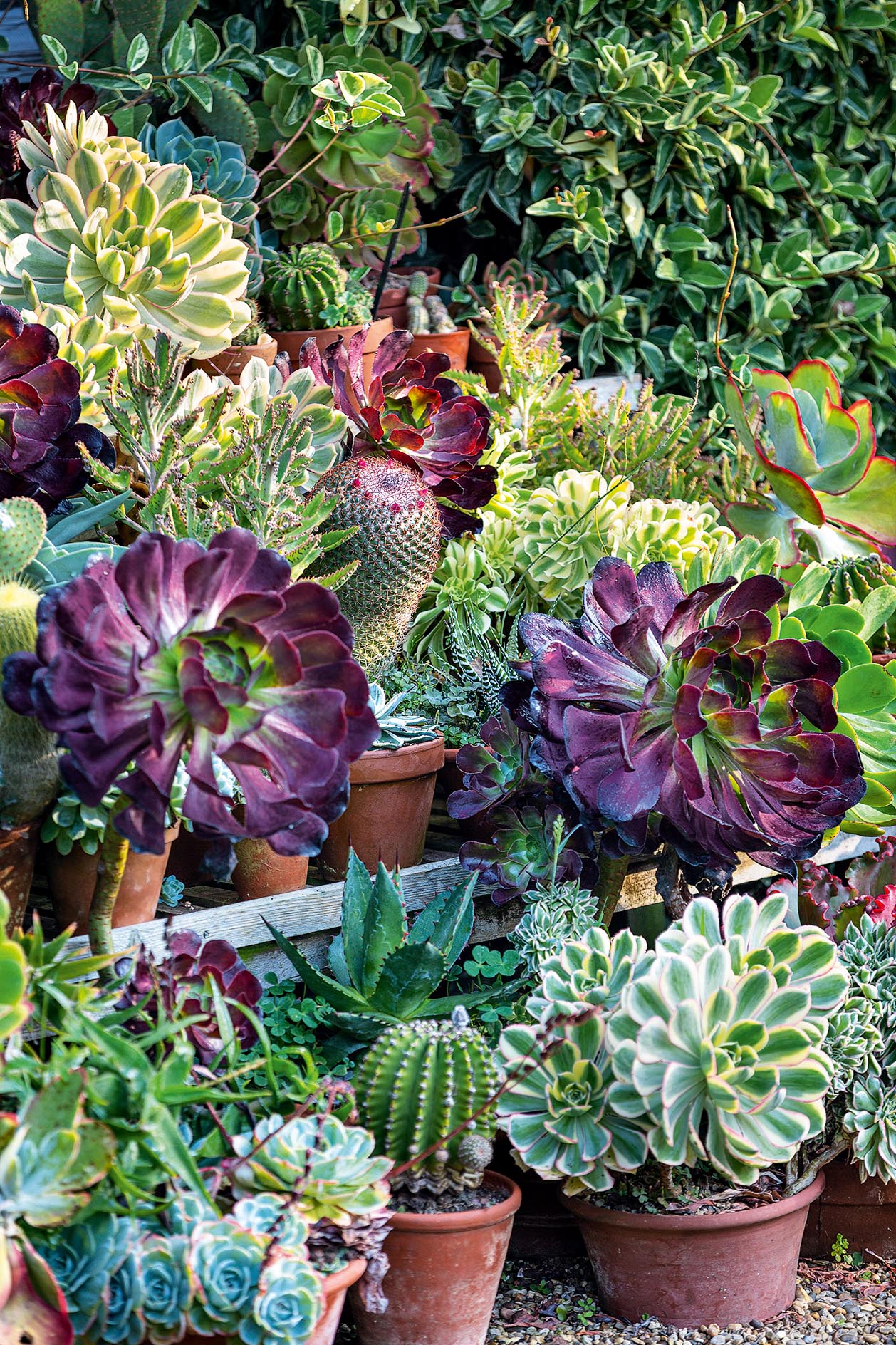
East Ruston’s late-season plants
Hydrangea macrophylla ‘Ayesha’ is an unusual mophead cultivar with lilac-like, scented flowers. The compact, 8in heads open white and subtly shift into mauve, sky blue or shell pink, creating a beautiful dappled effect. Flowering begins in early summer and continues for six months. Grown in part-shade, with rich, moist soil, it can reach 4ft–6ft. Foliage is glossy and bold, with crimson tones in the autumn
Fuchsia magellanica ‘Lady Bacon’ is an incredibly pretty, elegant fuschia known for its hardiness. From midsummer through to the first frost, the twiggy, arching branches are decorated with delicate long pendants, the powder-pink outer petals of which enclose the inner red and purple. Best grown in well-drained soil in sun or part shade and a sheltered position. Cut back to two buds in early spring to promote fresh new growth. Up to 5ft
Hibiscus sinosyriacus ‘Lilac Queen’ is an exotic, vigorous tree mallow that is surprisingly tough and easy to grow, although slightly less hardy than Hibiscus syriacus. Deciduous, with pale-green foliage and showy, hollyhock-like flowers in soft mauve, with a prominent, garnet-red centre, its flowers are produced continuously from summer to late autumn. Deserving of wider planting in our present warmer climate, it performs best in full sun and well drained soil. 5ft–8ft
Brugmansia x candida ‘Grand Marnier’ is an old cultivar, dating from the 1920s, a dramatic, evergreen, tropical shrub with particularly vigorous habit. Its abundant trumpet flowers are peachy-apricot and 12in long, covering the tree from June to late October and strongly fragrant at night. It requires full sun and heavy feeding for the best blooms. East Ruston’s brugmansia are root pruned and repotted in late autumn, overwintered in the greenhouse (minimum temperature 7˚C–10˚C) and then planted out in containers again the following May. 8ft–10ft. AGM
Nerine bowdenii ‘Zeal Giant’ is the showiest, snazziest nerine of all, sporting flamboyant blooms in a radioactive rich salmon-pink. Flowers appear October to November, before the foliage, on clear stems up to 2ft tall. Plant in early spring in well-drained soil and sunny position; they may need mulching overwinter in colder areas. Long-lived as a permanent planting in pots or against a wall mixed with Aster amellus cultivars.
Erythrina cristagalli, known as the coral tree or Christ’s tears, is a semi-woody, highly ornamental member of the pea family, with corky bark, trifoliate dark-green leaves and extraordinary crab-claw buds. These open into velvety, vivid scarlet flowers hanging in dense clusters up to 2ft long. Fairly hardy, it is trained against a south-facing wall at East Ruston, but could also be grown in a greenhouse. Can reach 28ft.
East Ruston Old Vicarage, Norwich, Norfolk, is open March–October —www.e-ruston-oldvicaragegardens.co.uk
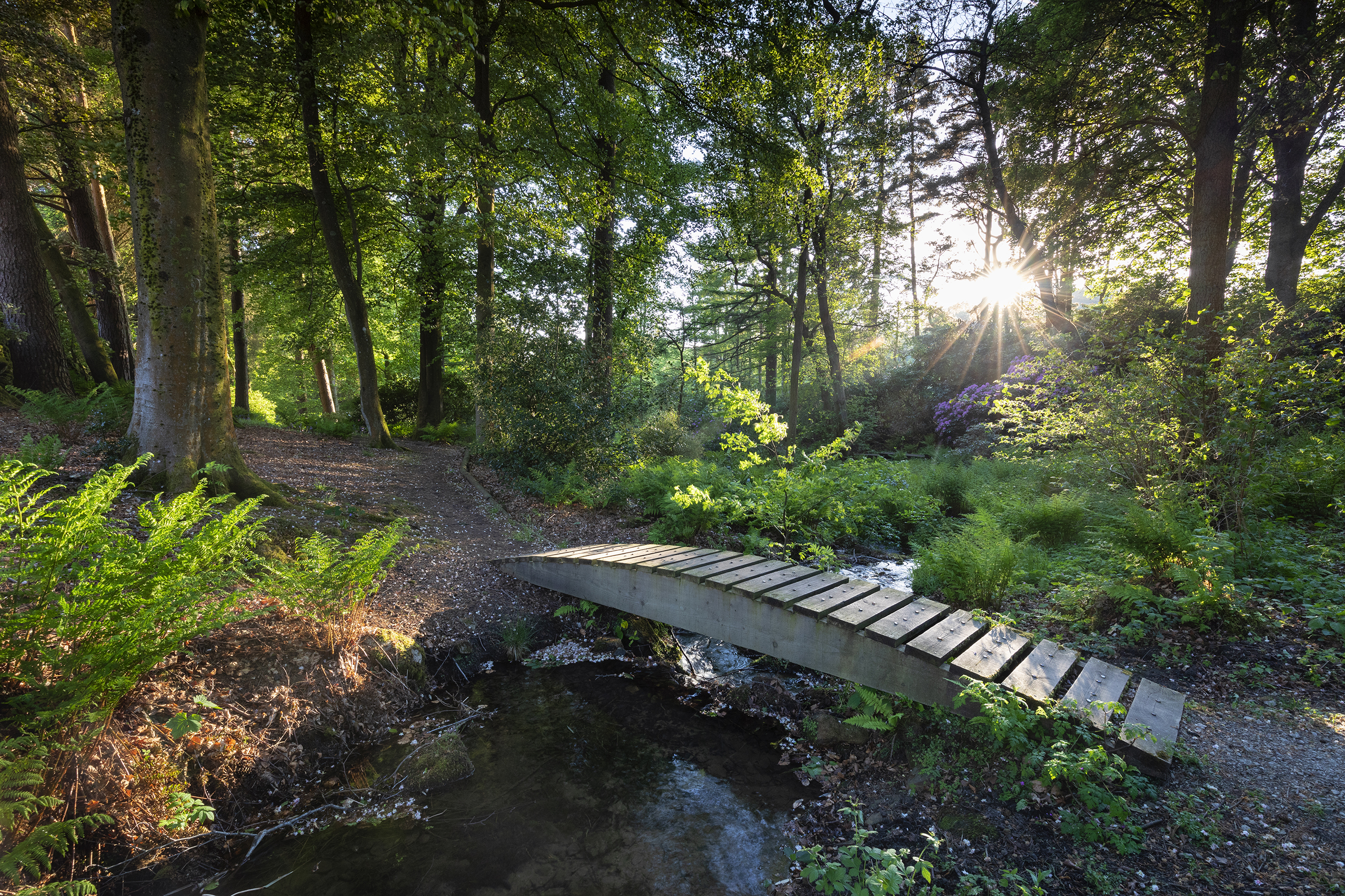
Parceval Hall: Tucked away in a corner of the Yorkshire Dales, a great garden that's perfectly restored
Steven Desmond visits the early-20th-century garden created at Parcevall Hall in Skyreholme, North Yorkshire, by Sir William Milner and now
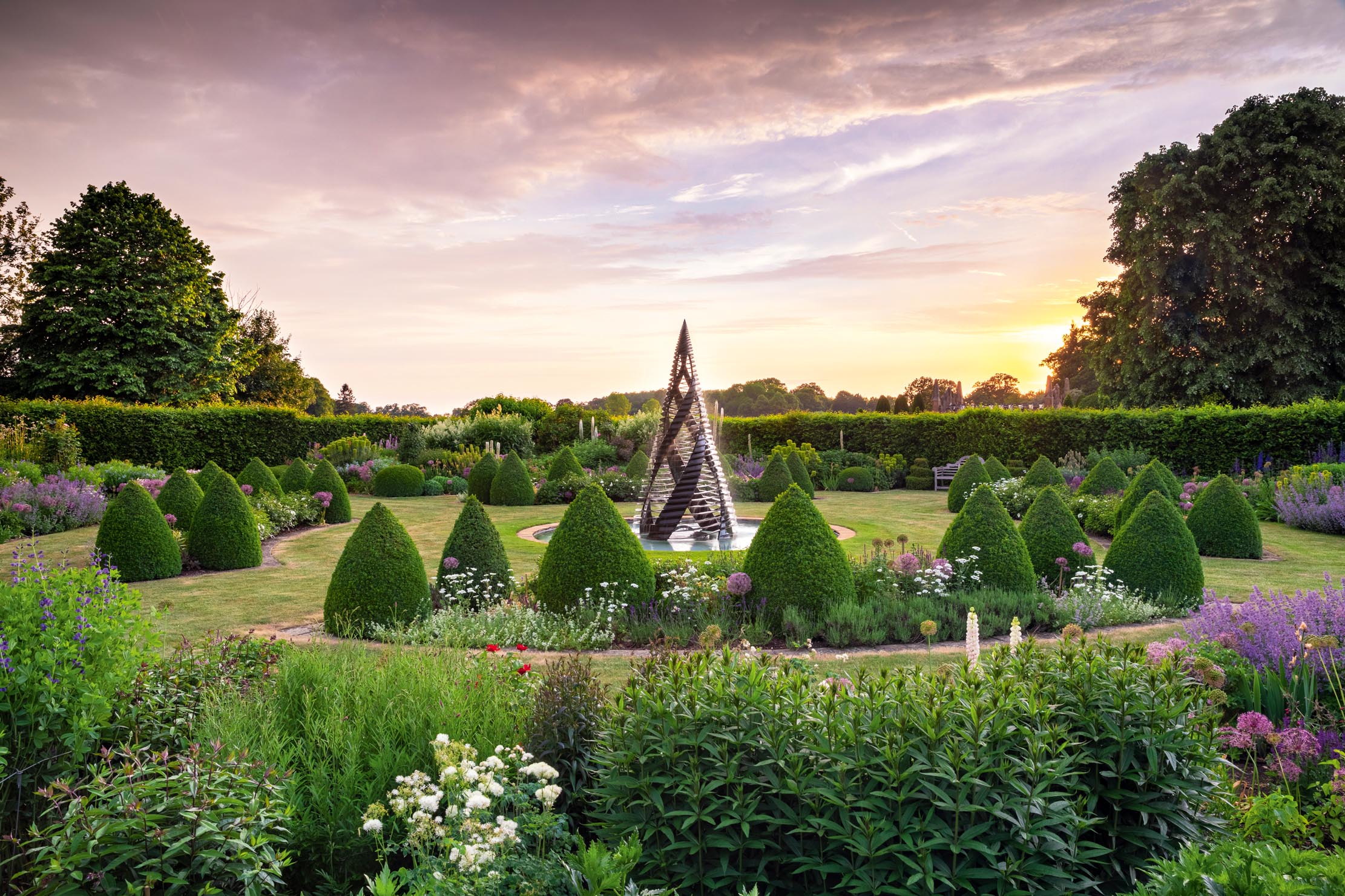
The gardens at Elton Hall: A 40-year transformation, an 'absolute hell of weeding and mulching ', and more than worth the effort
Tilly Ware visits the historic gardens of Elton Hall, Huntingdonshire, where much of the distant past remains a mystery, but
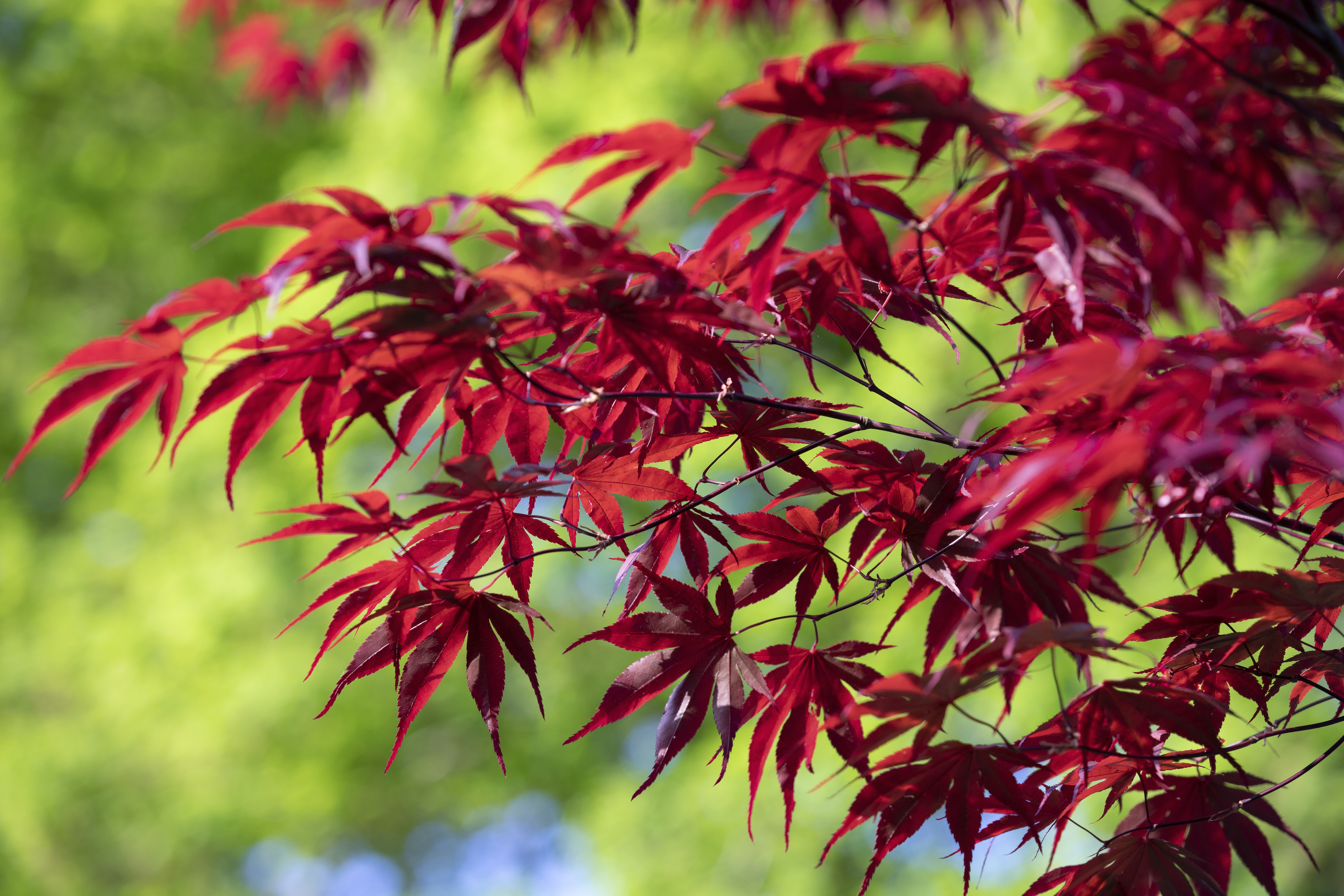
Japanese Acers: The ultimate guide to what to grow, how to grow it and the best acer varieties for your garden
Charles Quest-Ritson watches the leaves unfurl in one of spring’s most glorious sights — the reawakening of Japanese maples in
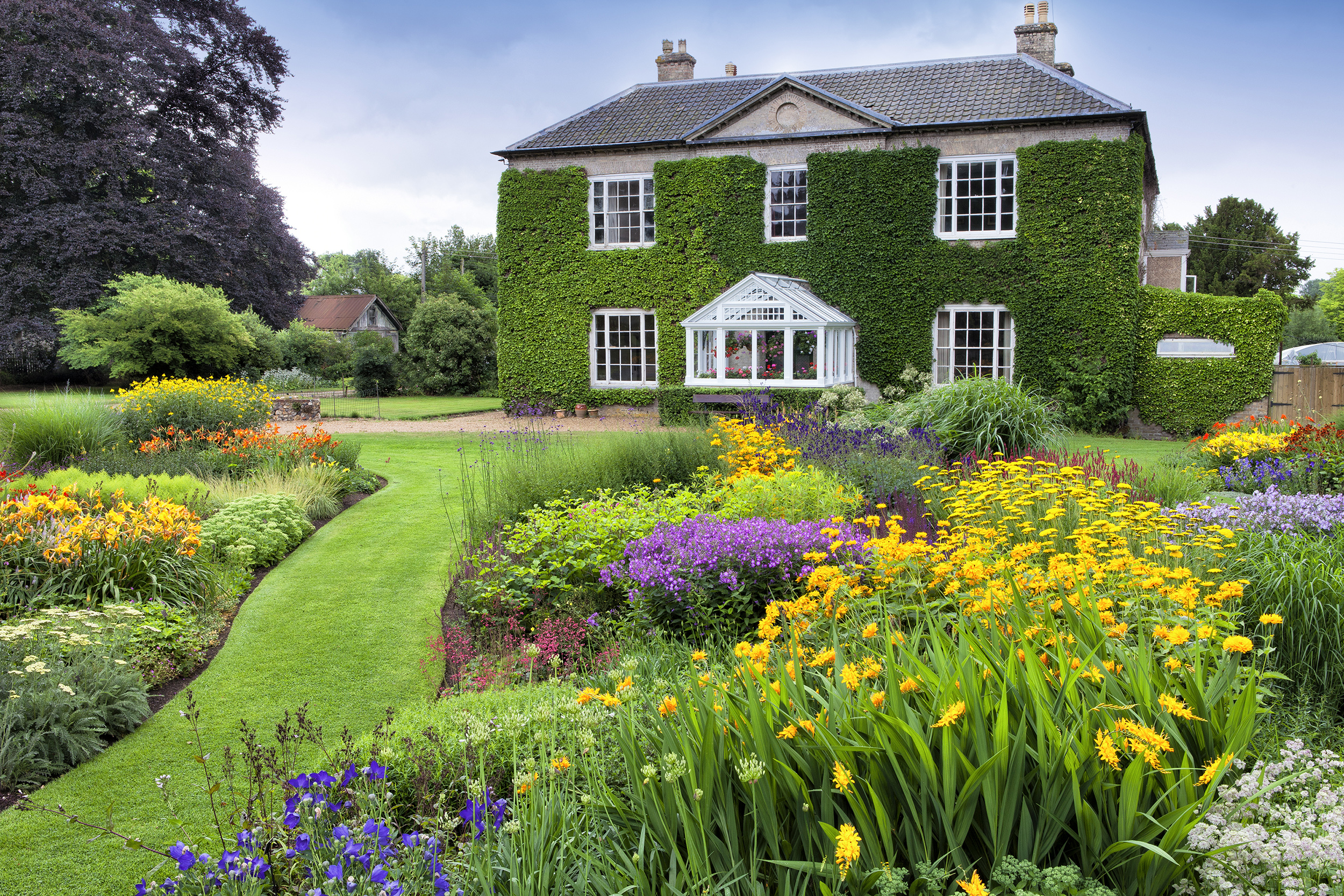
Bressingham Hall review: A splash of Georgian luxury and a stroll in stupendous, award-winning gardens
In the heart of Norfolk the beautiful Georgian pile that is Bressingham Hall makes a wonderful spot for a break,

The Dell Garden: A Renaissance paradise in Norfolk
George Plumptre explores the legacy of the great nurseryman Alan Bloom, via his remarkable Norfolk garden.

